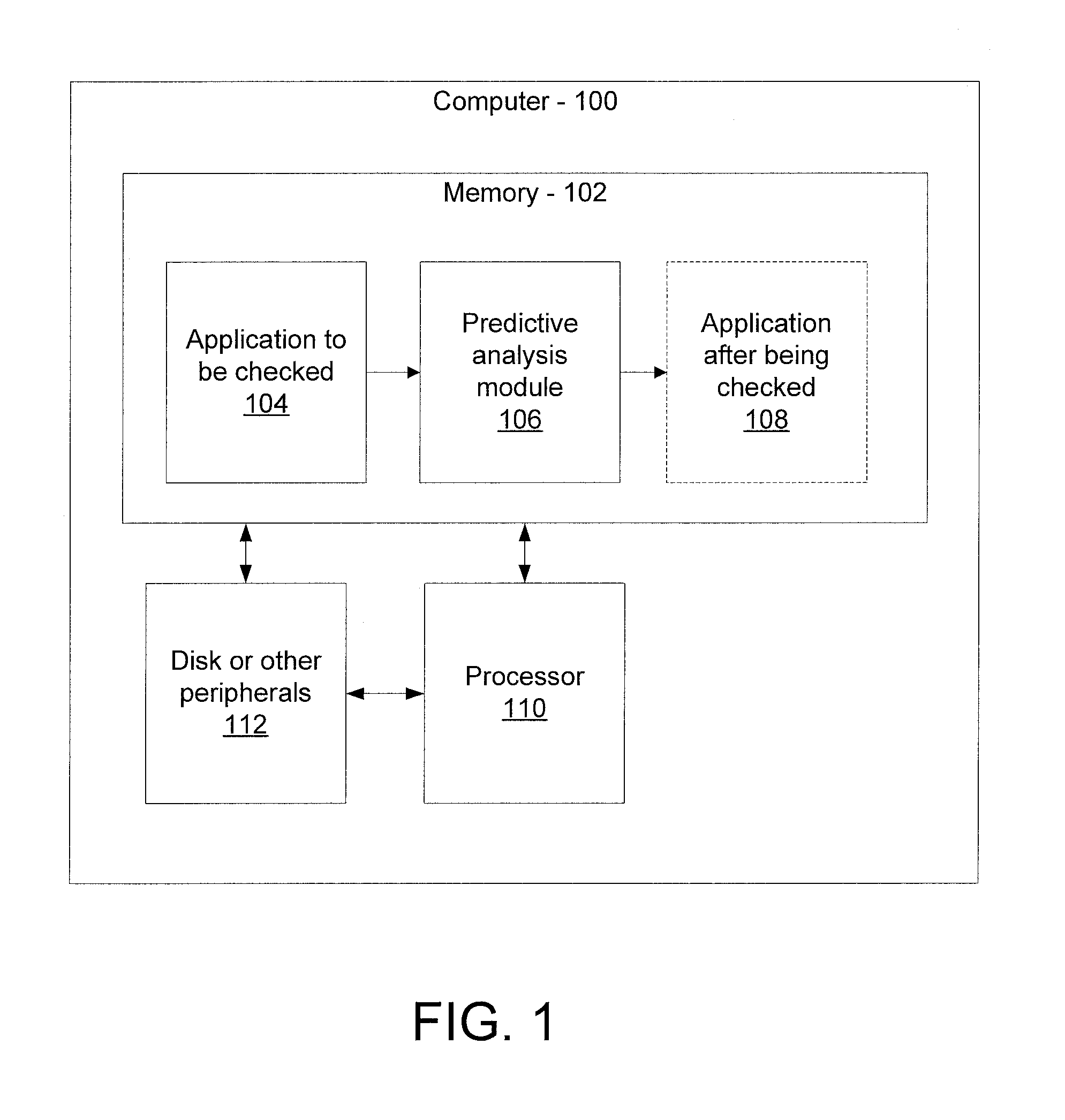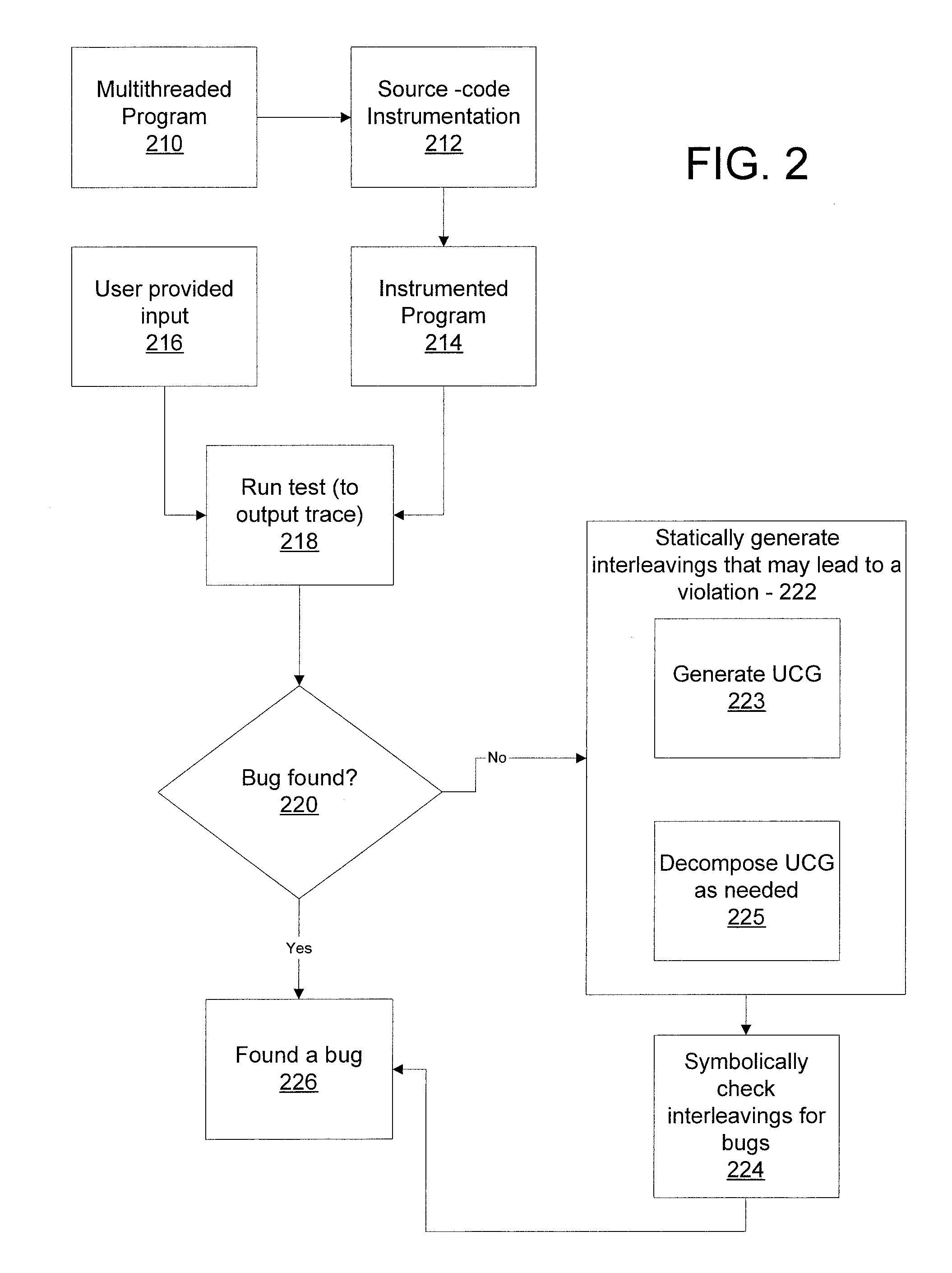Universal causality graphs for bug detection in concurrent programs
a technology of causality graph and concurrent program, applied in the field of computer program checking, can solve problems such as sound and complete but not scalable, and achieve the effect of more scalable and better coverag
- Summary
- Abstract
- Description
- Claims
- Application Information
AI Technical Summary
Benefits of technology
Problems solved by technology
Method used
Image
Examples
Embodiment Construction
[0017]In accordance with the present principles, a Universal Causality Graph (UCG) is a unified happens-before model for the given concurrent program and a property at hand. UCGs permit capture, as happens-before constraints, of the set of all possible interleavings that are feasible under scheduling constraints imposed by synchronization primitives that may potentially lead to violations of the property at hand.
[0018]A predictive analysis in accordance with the present principles is more exact, i.e., sound and complete. All synchronization primitives and the property being checked are considered in a unified manner. Existing techniques consider only programs with nested locks. The predictive analysis is applicable to a broader class of programs since no restrictions are placed on the set of synchronization primitives used whereas existing techniques either use only nested locks or use under-approximation. The predictive analysis is also more scalable than existing techniques. Apply...
PUM
 Login to View More
Login to View More Abstract
Description
Claims
Application Information
 Login to View More
Login to View More - R&D
- Intellectual Property
- Life Sciences
- Materials
- Tech Scout
- Unparalleled Data Quality
- Higher Quality Content
- 60% Fewer Hallucinations
Browse by: Latest US Patents, China's latest patents, Technical Efficacy Thesaurus, Application Domain, Technology Topic, Popular Technical Reports.
© 2025 PatSnap. All rights reserved.Legal|Privacy policy|Modern Slavery Act Transparency Statement|Sitemap|About US| Contact US: help@patsnap.com



